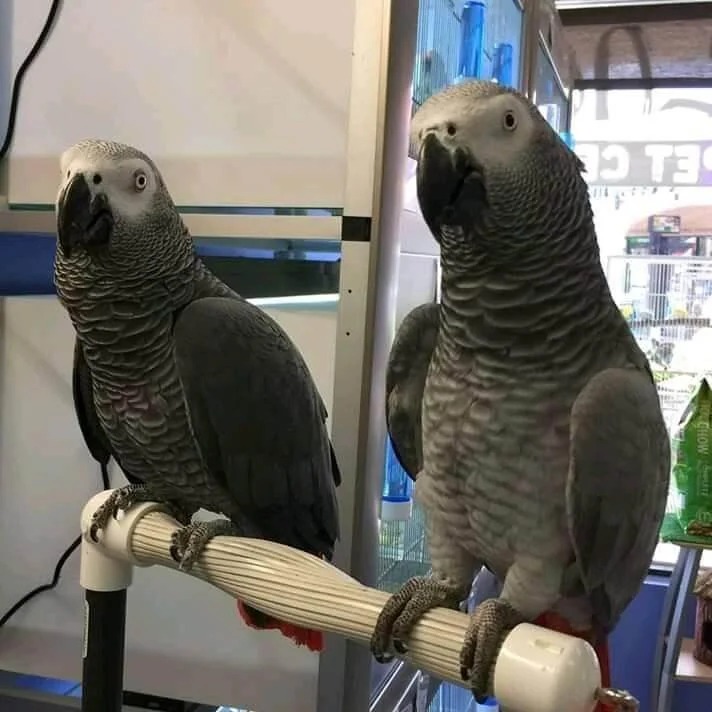
3
маяGuide To Grey African Parrot: The Intermediate Guide For Grey African Parrot

The Fascinating World of the African Grey Parrot: Everything You Need to Know
The African Grey Parrot (Psittacus erithacus) is not only understood for its striking look but likewise for its exceptional intelligence and social nature. Highly searched for as an animal, this bird has mesmerized the hearts of avian enthusiasts worldwide. This article will explore the attributes, care, and behavioral requirements of the African Grey Parrot, in addition to resolving often asked questions about this extraordinary bird.
Physical Characteristics
The african grey parrot care Grey Parrot sticks out due to its distinct coloration and features:

| Feature | Description |
|---|---|
| Size | Medium-sized, generally 12 to 14 inches |
| Weight | 300 to 400 grams |
| Color | Gray feathers, with intense red or maroon tail feathers |
| Lifespan | 40 to 60 years in captivity |
| Beak | Strong, curved, dark gray beak |
Subspecies
The African Grey Parrot is normally divided into two subspecies:
congo african grey parrot African Grey: Known for its bigger size and more striking pigmentation, mainly discovered in the central rain forests of Africa.
Timneh African Grey: Slightly smaller sized with a darker feathers and a distinct maroon tail.
Understanding these physical characteristics is essential for prospective owners, as some aspects can affect care regimens and environmental requirements.
Behavioral Characteristics
African Grey Parrots are renowned for their high intelligence levels. They can find out a comprehensive vocabulary and simulate numerous sounds, including human speech. Their cognitive abilities make them a happiness to have around but also an obstacle, needing dedicated mental stimulation.
Secret Behavioral Traits:
Social Interaction: African Greys delight in interaction and can end up being mentally connected to their owners. They grow in social environments and do not prosper in solitary conditions.
Problem Solving: They have remarkable analytical skills, frequently determining how to open locks or control items.
Monotony and Destructive Behavior: Without adequate psychological stimulation, African Grey Parrots can develop boredom-related behaviors. Toys and exercises should be incorporated into their daily routine to prevent harmful propensities.
Caring for an African Grey Parrot
Caring for an african grey parrot adoption grey african parrot (click through the next webpage) Parrot involves understanding its requirements in regards to diet plan, workout, and social interaction. Here are some essential tips:
Diet
A balanced diet plan is important for preserving health. A typical diet may include:
- Pellets: Formulated pellets must make up about 60-70% of their diet plan.
- Fresh Fruits and Vegetables: Aim for a range of colors to make sure a broad variety of nutrients.
- Nuts and Seeds: Use these as treats and not as the main diet due to high-fat material.
- Water: Always offer fresh water and alter it daily.
Real estate
- Cage Size:alex the african grey parrot cage needs to be spacious adequate to allow flight. Minimum measurements of 2 feet broad by 3 feet long by 3 feet high are advised.
- Environment: Provide lots of toys and perches, and turn toys to keep the environment stimulating.
Social Interaction and Training
- Daily Interaction: Spend several hours every day communicating with your parrot. They need attention and love to take part in household activities.
- Training: Use favorable support strategies for training. Early socializing is essential to establish a well-adjusted bird.
Health Considerations
Like all family pets, African Grey Parrots can experience health issues. Routine veterinary check-ups, an appropriate diet, and a safe environment add to long-term wellness. Here are some typical health problems:
Common Health Problems
- Conditions: Feather plucking, weight problems, and respiratory infections.
- Signs to Watch: Changes in vocalizations, changes in appetite, sleepiness, or unusual habits might show a health problem.
Frequently Asked Questions (FAQs)
1. Are African Grey Parrots great family pets?
Yes, they can be exceptional family pets for those who can provide them with the time, attention, and stimulation they need. Their sociable nature makes them loving companions.
2. For how long do African Grey Parrots live?
With correct care, African Grey Parrots can live in between 40 and 60 years in captivity.
3. Can African Grey Parrots talk?
Yes, they are amazing mimics and can learn a vast vocabulary along with sounds from their environment.
4. Do they require a companion?
While they can bond deeply with their owners, African Grey Parrots frequently benefit from having another bird as a companion to meet their social requirements.
5. How typically should they be secured of their cage?
They should preferably be enabled out of their cage for several hours each day for workout and social interaction.
The African Grey Parrot is not simply a pet however buy a grey parrot buddy that prospers on human interaction and psychological challenges. Their intelligence and social nature make them gratifying, yet requiring to look after. For anybody considering inviting an African Grey into their home, it's crucial to recognize the dedication needed and the pleasure these birds can bring. By understanding their needs and attributes, potential owners can ensure a satisfying experience for both themselves and their feathered good friends.
Отзывы